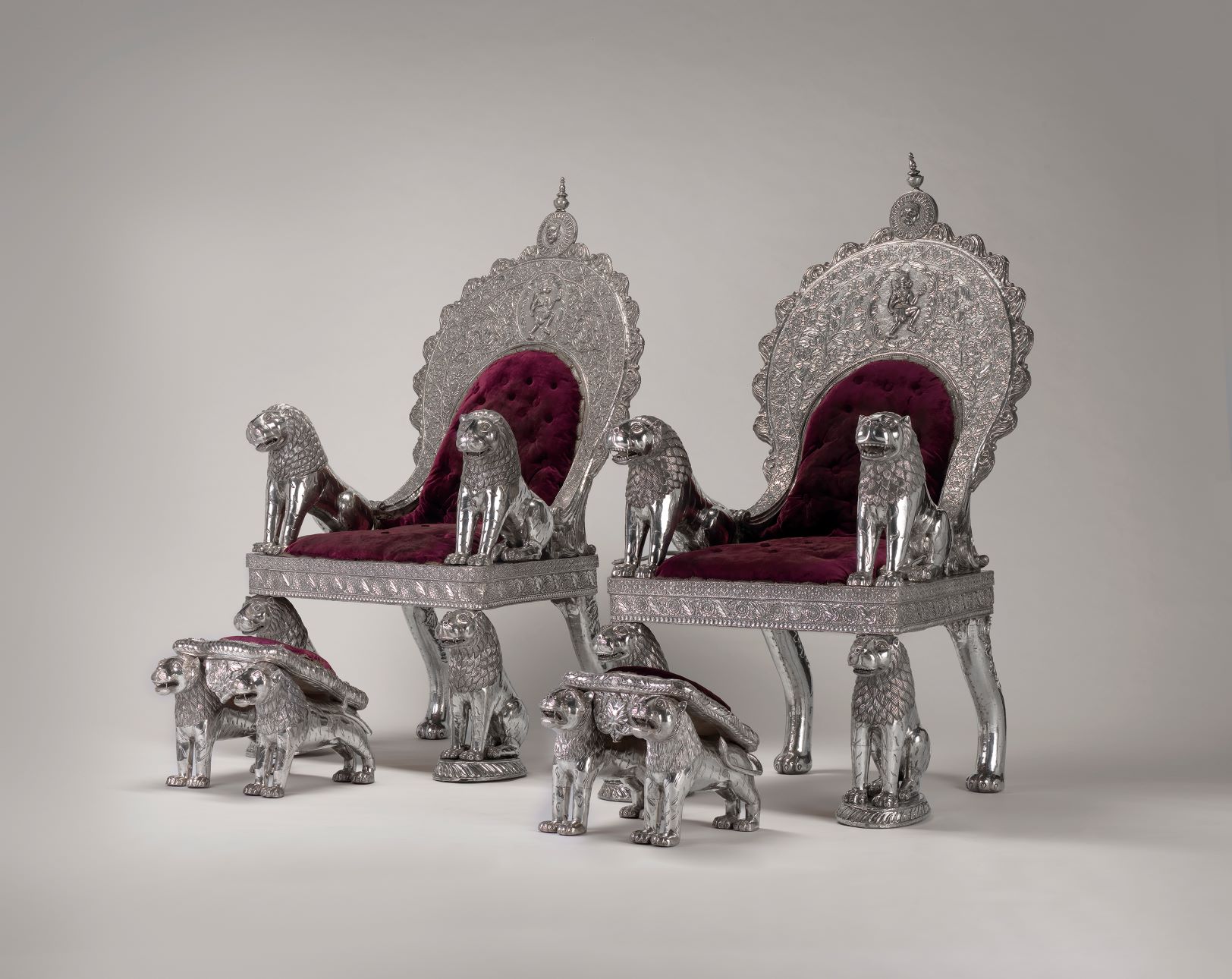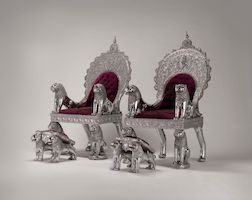
KANSAS CITY, Mo. – A pair of ornate silver thrones with an intriguing history is currently on view at the Nelson-Atkins Museum of Art in Kansas City. Silver Splendor: Conserving the Royal Thrones of Dungarpur, India presents the royal assemblage following a multi-year conservation effort to restore them to their original glory, a process that is documented for visitors with a video at the exhibition. The thrones will be on view until May 28, 2023.
“These magnificent thrones demonstrate the power and grandeur of India’s historical rulers,” said Menefee D. and Mary Louise Blackwell CEO & Director of the Nelson-Atkins Julian Zugazagoitia. “Yet along with tradition, we also see change. Created by an Indian king during the British Colonial era in India, the thrones combine both European and Indian design and imagery.”
In 1911, King George V was crowned emperor of India in a lavish ceremony in Delhi. Also in 1911, this pair of silver thrones was commissioned for the ruler of Dungarpur, a small kingdom in the western Indian state of Rajasthan. Because the thrones were commissioned in the same year as the coronation, it is believed they were made in time to receive touring dignitaries at court during the 1911 celebrations.
“While visitors will be dazzled by the materials and the wonderful workmanship of the silver, I encourage everyone to look closely at the decoration,” said Jean McCray Beals Curator of South and Southeast Asian Art Kimberly Masteller. “The imposing lions are signs of kingship and the Hindu deities depicted on the backrest are associated with the Dungarpur kingdom and royal lineage. The Dungarpur thrones and their regalia have many stories to tell. They reveal complex histories of cultural exchange and the representation of political power.”
A former Dungarpur king brought the thrones to Europe in 1969 and the Nelson-Atkins acquired them in 2013. Since then, the museum conservators painstakingly cleaned the silver and overlaid the worn velvet of the thrones and footstools with new, hand-dyed fabric. With the assistance of local and international partners, including Lesage Interieurs in Paris, a reproduction of the assemblage’s chhatri, a large, embroidered parasol, was also completed using a combination of advanced technologies and traditional Indian materials and techniques. A selection of Indian paintings and decorative arts workshop drawings will accompany the thrones to explore the influence of European aesthetics in Indian furniture design.
Visit the website of the Nelson-Atkins Museum of Art and see its dedicated page for Silver Splendor: Conserving the Royal Thrones of Dungarpur, India.



